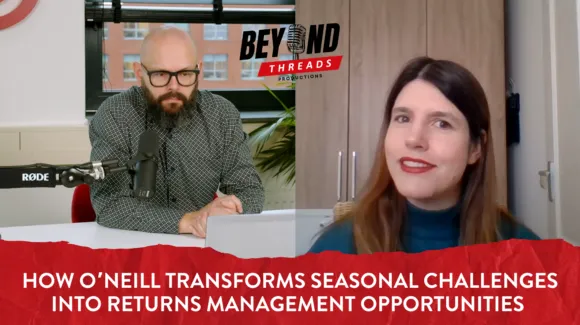In today’s complex omnichannel landscape, brands that approach transport management with a fragmented, channel-by-channel mindset are putting their customer experience at risk. The most successful international players recognise that centralising transport management is key to consistently delighting customers – whether they’re ordering from your e-commerce site or a marketplace, or picking up a piece in-store. The question is, then: how to effectively manage distribution for all these channels at once?
Press play on this episode of Beyond Threads to hear from Ruud Mars, Director of Business Development and Transport at Bleckmann, as he reveals how a strategic approach can transform transport from a backend cost into a competitive advantage.
Understanding the omnichannel transport challenge
Operating across retail, wholesale and e-commerce sales channels creates an intricate transport puzzle, with each channel requiring a different set of shipping solutions. For instance, retail stores require frequent deliveries coordinated with product launches and seasonal campaigns. Meanwhile, wholesalers require larger shipments with rigid delivery windows, and strict penalties are often imposed for early or late arrivals of stock. On the other hand, e-commerce selling results in high volumes of small parcels with shorter lead times, plus the added complexity of returns management and customer-facing tracking.
“Each sales channel has fundamentally different transport requirements, so a one-size-fits-all approach to transport management simply doesn’t work,” explains Ruud. “When dealing with such a high volume of inventory across multiple channels, you need a ‘control tower’ set-up to provide you with holistic real-time visibility of your entire transport network. That’s how you make sure you’re agile enough to respond to unforeseen issues in your supply chain and ensure reliable shipments for all customers.”
Listen to audio only
Building an integrated transport management system
An important way for brands to construct flexible and efficient transport operations is by using smart planning and allocation systems to spot where shipments for different channels can be consolidated. This integration enables cross-channel consolidation. For example, retail shipments can be combined with wholesale orders in the same geographical area, dramatically reducing per-unit transport costs while improving service levels across both channels. However, this can only be done effectively if you have clear cross-channel visibility and a strong understanding of where your inventory is in real time.
“The key to consolidating orders across your omnichannel transportation network is sharing data between your warehouse and transport management systems,” says Ruud. “When you can see order volumes across all channels simultaneously, you can make intelligent decisions about consolidation opportunities, route optimisation and capacity allocation that would be impossible with siloed, channel-exclusive systems.”
Upgrading your approach to transport management
A better customer experience depends on how you view transport as a function. Those who see it as simply a cost centre are more likely to only be looking for ways to reduce costs. On the other hand, those that view transport as essential to the overall customer experience can achieve key advantages, including shorter lead times, higher service levels and lower shipping costs through consolidation and automation. Equally, brands can reduce emissions by using smarter routing to achieve fewer ‘empty miles’ – a crucial advantage as sustainability becomes more important for consumers and regulators.
“Transport is no longer just a back-office function in fashion logistics – it’s becoming a strategic differentiator,” concludes Ruud. “The brands winning in today’s fashion market think about transportation in terms of top-line growth potential rather than bottom-line costs. They understand that a robust transport framework enables better customer experiences, faster omnichannel fulfilment and more flexible business models.”
Press play on this Beyond Threads webinar to get the full story from Ruud and discover how transforming your approach to transport management can help you overcome logistical complexity and unlock a powerful strategic asset.
















